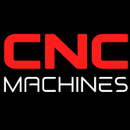CNC Fiber Laser Cutting: The Evolution of Laser Systems in Modern Manufacturing

CNC Fiber Laser Cutting: The Evolution of Laser Systems in Modern Manufacturing
Over the past few decades, laser cutting has evolved from a niche process to a backbone of modern CNC manufacturing. Among the most transformative advancements in this field is the fiber laser—a powerful, efficient technology that’s rapidly replacing traditional CO₂ systems in sheet metal, tube, and precision component fabrication. In this article, we’ll trace the evolution of laser systems, highlight the advantages of CNC fiber lasers, and explain why they’ve become the preferred solution for high-speed, high-precision cutting.
A Brief History of Laser Cutting in Manufacturing
1. CO₂ Laser Systems (1970s–2000s)
- Technology: CO₂ lasers use a gas mixture (carbon dioxide, nitrogen, helium) electrically excited to emit infrared light.
- Wavelength: ~10.6 microns
- Strengths: Great for cutting non-metal materials (wood, plastics, fabrics) and thick metal sheets.
- Limitations: Bulky machines, high maintenance, reflective materials (like aluminum or copper) are difficult to cut efficiently.
CO₂ lasers dominated the laser market for decades, but they came with high operating costs and complexity, especially in beam delivery and cooling systems.
2. Nd:YAG Lasers (1990s–2000s)
- Technology: Uses a solid-state crystal (neodymium-doped yttrium aluminum garnet) to produce light.
- Strengths: Capable of pulsed or continuous operations and used in welding or marking applications.
- Limitations: Less efficient for high-speed cutting, complex to maintain.
Nd:YAG lasers brought improvements in energy efficiency and pulse control but didn’t fully overcome the limitations of CO₂ systems in metal cutting applications.
3. The Rise of CNC Fiber Lasers (2010–Present)
- Technology: Fiber lasers use a diode-pumped fiber optic cable (doped with rare-earth elements like ytterbium) to generate and deliver laser beams.
- Wavelength: ~1.06 microns
- Strengths: Highly efficient, compact, faster, and capable of cutting reflective metals with ease.
Today, fiber lasers have overtaken CO₂ systems in most metal fabrication shops due to their speed, lower operating cost, and exceptional cut quality—especially on thin to mid-range materials.
How CNC Fiber Laser Systems Work
CNC fiber laser machines integrate fiber laser sources with precise computer numerical control (CNC) systems. Here's how they work:
- Laser Source: Diode lasers pump a fiber optic cable, emitting a focused laser beam.
- Beam Delivery: The beam is transmitted through flexible fiber optics (no mirrors required) to the cutting head.
- Cutting Head: Focuses the beam with a lens, assisted by a nozzle delivering high-pressure gas (oxygen, nitrogen, or air) to aid in material removal.
- CNC Controller: Directs the laser head movement with G-code programming, following the exact path of a CAD-designed part.
Because fiber lasers have a much smaller wavelength than CO₂, they absorb more efficiently into metal, resulting in faster cutting and narrower kerf widths.
Advantages of CNC Fiber Laser Cutting
1. Higher Cutting Speeds
- Up to 3–5x faster than CO₂ lasers on thin materials (e.g., 1/8” stainless steel).
- Minimizes cycle times for production runs.
2. Superior Energy Efficiency
- Up to 50% less power consumption compared to CO₂ systems.
- Lower maintenance due to no mirrors or complex resonators.
3. Excellent Cut Quality
- Clean, burr-free edges on mild steel, stainless steel, and aluminum.
- Smaller kerf and minimal heat-affected zone (HAZ), preserving material integrity.
4. Flexibility in Materials
- Cuts reflective metals like copper, brass, and aluminum with precision—difficult for CO₂ lasers.
- Ideal for processing sheet metal, tubes, and structural steel components.
5. Reduced Maintenance Costs
- No mirrors to align or replace.
- Solid-state components ensure longer system lifespans.
Applications of CNC Fiber Lasers in Modern Industries
Fiber laser technology has become a go-to solution across multiple industries:
- Automotive: Chassis parts, brackets, and exhaust components.
- Aerospace: Lightweight aluminum structures, turbine blades, and enclosures.
- Defense: Armor plates, frames, and specialized alloys.
- Electronics: Enclosures, PCBs, and micro-components.
- Architecture: Decorative panels, signage, railings, and precision sheet metal.
The integration with CAD/CAM software and automated nesting systems allows manufacturers to maximize material utilization and streamline production.
Key Considerations When Choosing a CNC Fiber Laser Machine
- Power Rating
- Machines range from 1kW to 20kW+. Higher wattage improves cut speeds and thicker material capabilities.
- Cutting Bed Size
- Standard beds are 4’x8’, but larger formats exist for industrial applications (e.g., 5’x10’ or custom).
- Automation Features
- Look for automatic loading/unloading, nozzle changers, or dual shuttle tables for high-volume shops.
- Software Integration
- Seamless compatibility with CAD/CAM and real-time monitoring tools improves workflow and traceability.
- Maintenance & Support
- Choose a vendor with a reliable service network and preventative maintenance programs.
Future Trends in CNC Fiber Laser Technology
- Artificial Intelligence (AI): Optimizing cutting parameters and detecting defects in real-time.
- Real-Time Edge Tracking: Vision systems adjusting paths based on material variation or distortion.
- Integrated Tube Cutting: 5-axis fiber laser systems that cut pipes and profiles in one setup.
- Hybrid Machines: Combining fiber laser and CNC punching for multitasking in one platform.
- Green Manufacturing: Eco-efficient lasers with low power draw and high recyclability.
Conclusion
The evolution from CO₂ to CNC fiber laser systems marks a revolutionary shift in metal fabrication technology. With faster cutting speeds, greater energy efficiency, and the ability to process a wider range of materials, fiber lasers are now the industry standard for precision manufacturing. Whether you're a job shop scaling up or an OEM streamlining operations, investing in fiber laser technology will improve productivity, reduce costs, and position your business at the forefront of modern machining.


